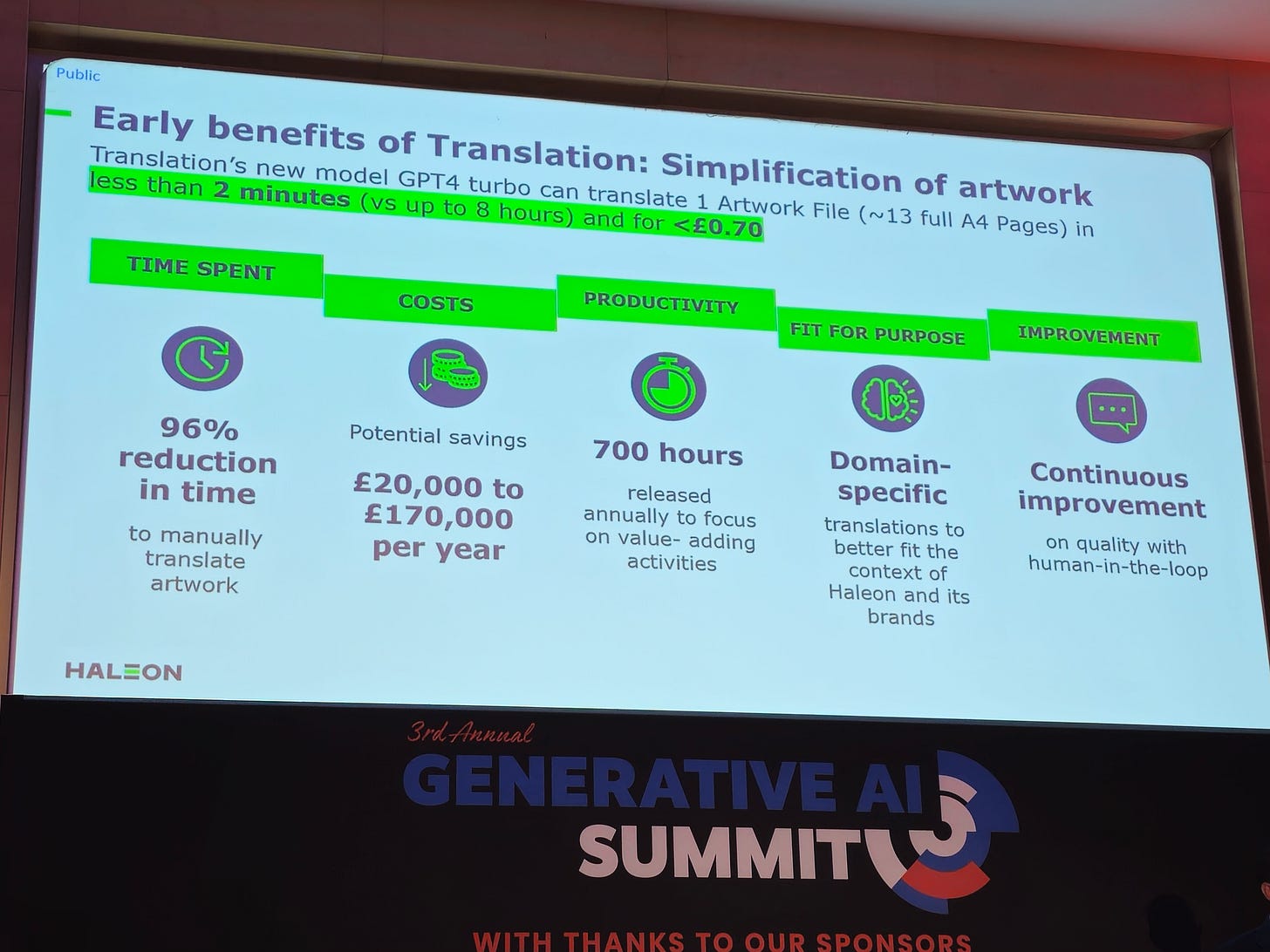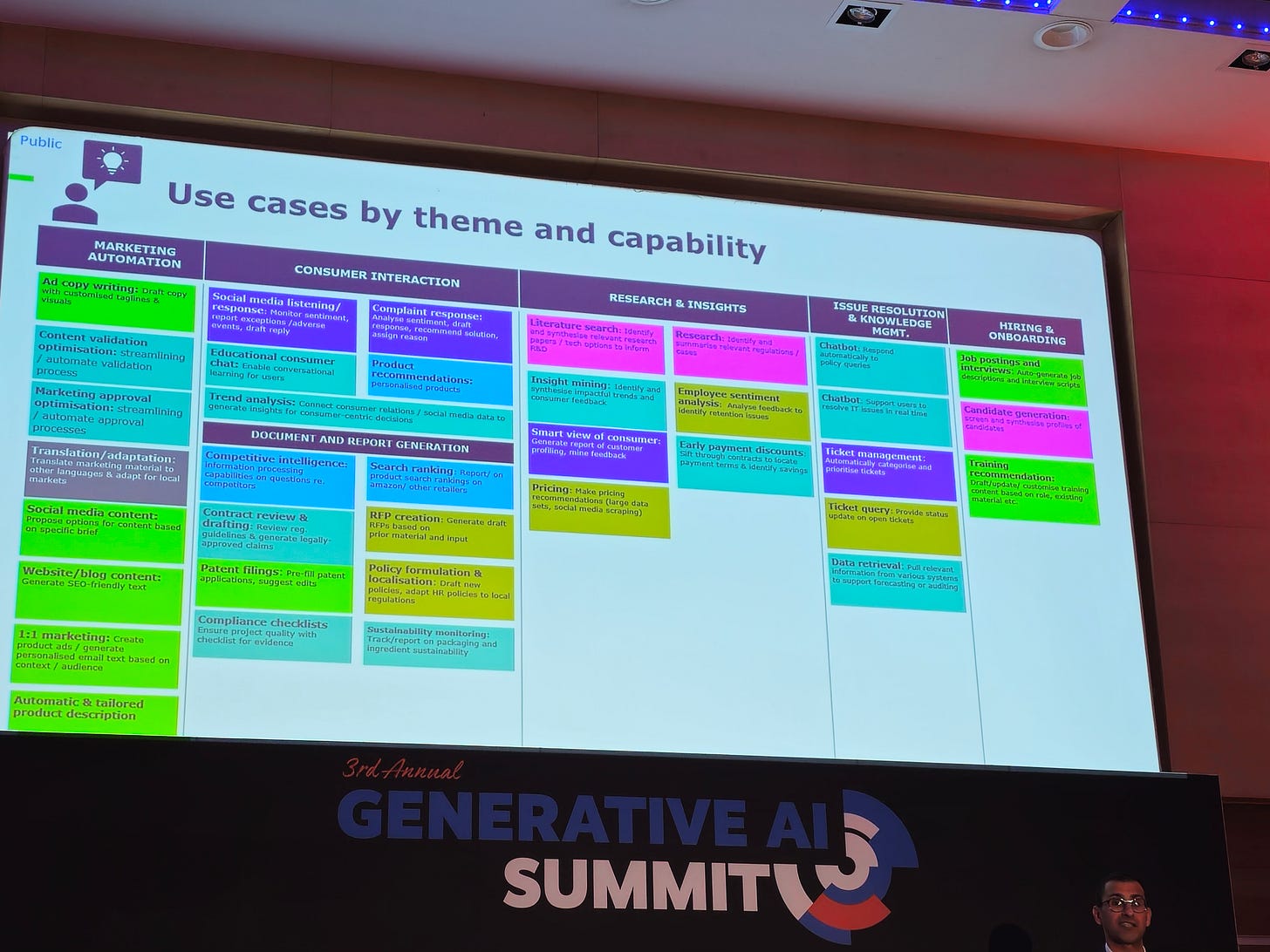- Pascal's Chatbot Q&As
- Posts
- Summary of Day 1 of The Generative AI Summit 2025, London Edition. A candid, cross-industry playbook for how to scale genAI responsibly, while maximizing business value.
Summary of Day 1 of The Generative AI Summit 2025, London Edition. A candid, cross-industry playbook for how to scale genAI responsibly, while maximizing business value.
GenAI can deliver real returns—if approached as a strategic capability. Whether you scale it wisely or stall in experimentation will depend on how seriously you treat both opportunity & responsibility
Scaling GenAI with Confidence: C-Level Playbook from Day 1 of the Generative AI Summit London
by ChatGPT-4o
Executive Summary for C-Level Leaders in Publishing, Tech, and Regulated Industries
Day 1 of the Generative AI Summit in London revealed a candid, cross-industry playbook for how to scale generative AI responsibly—while maximizing business value and avoiding the pitfalls that stall innovation. Through stories from healthcare, manufacturing, finance, logistics, and consumer goods, one thing became clear:
GenAI can deliver real returns—if approached as a strategic capability, not just a shiny tool.
Below, the lessons are clustered around two C-level priorities:
1. When You Want Financial Growth and Strong ROI from GenAI
A. Don’t Start with Use Cases—Start with Capabilities
Several speakers emphasized grouping GenAI efforts around cross-functional capabilities (e.g. translation, legal automation, content generation, data retrieval) rather than chasing scattered use cases.
This allows for reuse, scale, and stronger ROI over time—especially in global organizations.
B. Measure Everything—or Don’t Scale It
All successful deployments had clear value measurement frameworks:
Hard savings (e.g. avoided vendor costs for translation or legal review)
Soft productivity gains (e.g. internal copilots reducing cycle time by 90%)
Revenue lift (e.g. AI-generated marketing content improving web engagement by 25%)
If it can’t be tied to growth, saved spend, or customer experience—don’t deploy at scale.
C. Optimize for Work Elimination—not Work Redistribution
AI pilots often succeed by removing low-value work, but later fail when they simply shift complexity downstream (e.g. pushing burdens onto architects or reviewers).
Measure total effort saved, not just upstream gains.
D. Build Internal Platforms—Not Just Tools
Mature organizations (like 3M and Haleon) are moving toward centralized, governed GenAI platforms that integrate with enterprise systems (SAP, CRM, Office).
This enables capabilities to scale across the enterprise, not sit in silos.
E. Invest in the “Unsexy” Stuff: Training, Prompting, Feedback
AI systems only work if people use them well.
Invest in prompt engineering guides, user training, and built-in “guidance modes” to avoid churn and frustration.
Gather structured user feedback and treat GenAI as a product, not a project.
2. When You Want to Minimize Risk and Retain Control
A. Governance Is the Enabler—Not the Enemy
Every successful company had clearly defined, tiered governance frameworks:
Business units own value and risk
IT assesses feasibility and integration
A Responsible AI Council (legal, data, ethics, security) reviews before scale
As 3M put it: “If you get the governance right, you can go faster and harder.”
B. Manage the Risk of Not Using AI
Several leaders highlighted that not adopting GenAI is now a competitive risk.
Missing productivity gains or automation opportunities could mean falling behind.
C. Build for Explainability, Consistency, and Human Review
Enterprises are using sampling standards (e.g. ISO 2859-4) to determine when human review is required—especially for high-volume content (legal docs, captions, metadata).
Without these, auditability and trust erode.
D. Control Access and Monitor Usage with Shadow AI Rising
Leaders across industries acknowledged widespread “shadow GenAI” use.
Solutions:
Provide a secure internal alternative (e.g. internal ChatGPT with guiding mode)
Set up a use case registry to comply with EU AI Act requirements
Publish clear policies with tool-specific authorizations
E. Protect Brand, Data, and IP
All organizations emphasized strict rules on:
Not uploading sensitive or confidential content
Managing IP risks from AI-generated content
Avoiding public-facing hallucinations that could harm reputation
F. Scale Slowly in Regulated Domains
In health, legal, and finance, GenAI cannot be treated like consumer tech.
Pilot in closed, non-production environments (e.g. internal legal teams), with process-specific validation and rigorous controls.
Final Thought for the C-Suite
Financial growth and risk reduction aren’t opposing goals—they’re both outcomes of good GenAI design.
The businesses seeing the most success have:
Clear value measurement frameworks
A platform mindset
Responsible governance that unlocks—not hinders—innovation
A deep respect for the humans using, guiding, and evaluating these systems
Day 1 made one thing clear: The GenAI revolution isn’t coming—it’s already happening. Whether you scale it wisely or stall in experimentation will depend on how seriously you treat both the opportunity and the responsibility.



·
18:43
